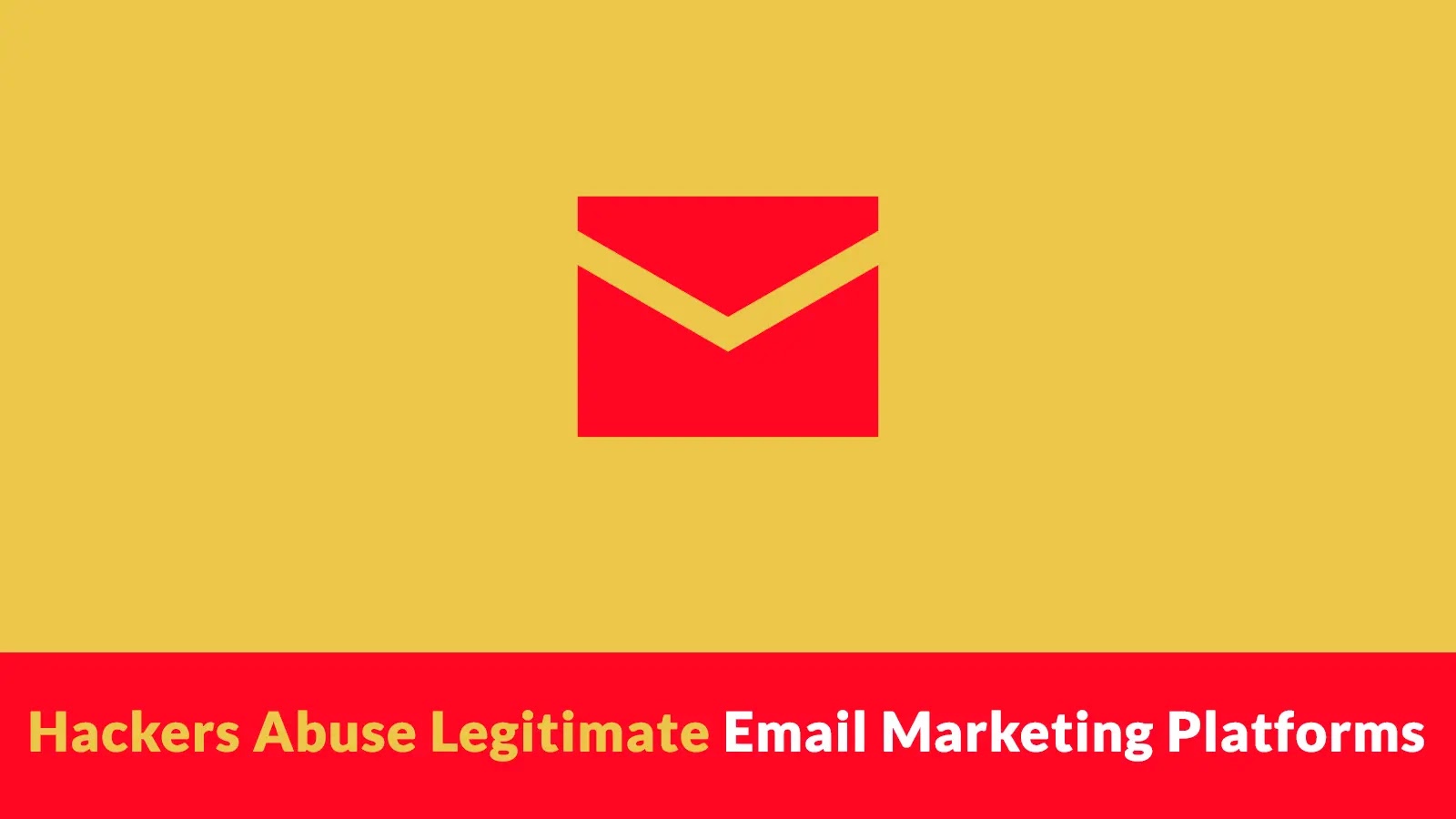
Hackers Abuse Legitimate Email Marketing Platforms to Disguise Malicious Links
The Deceptive Lure: How Hackers Weaponize Legitimate Email Marketing Platforms
In the evolving threat landscape, cybercriminals are refining their tactics, moving beyond crude spam to sophisticated social engineering. A particularly insidious development involves the exploitation of legitimate email marketing platforms to deliver malicious content. This strategy leverages the inherent trust associated with established service providers, allowing attackers to bypass traditional security measures and significantly increase their chances of successful victim compromise. This post will dissect this emerging threat vector, explaining how adversaries weaponize trusted infrastructure and what organizations can do to protect themselves.
The New Frontier of Phishing: Abusing Trusted Infrastructure
Phishing campaigns have historically relied on spoofed sender addresses or obviously forged emails. However, the modern threat actor is far more cunning. By utilizing legitimate email marketing services – platforms designed for mass communication and trusted by countless businesses – attackers gain a significant advantage. These services offer robust infrastructure, including advanced deliverability mechanisms, and critically, click-tracking domains and URL redirection features. Adversaries exploit these very features to mask their malicious intent.
When an attacker crafts a phishing email through such a platform, the initial URLs embedded within the email do not point directly to a malicious site. Instead, they point to a tracking domain operated by the legitimate email marketing service. This domain, due to the service’s reputation, is often pre-approved by email security gateways and spam filters. Only after the victim clicks the link is a redirection initiated to the actual nefarious payload – whether it’s a credential harvesting page, a malware download, or a scam site.
Evasion Techniques: Bypassing Security Gates
The primary reason for this tactic’s effectiveness lies in its ability to circumvent standard security layers:
- Reputation-Based Filtering: Email security solutions often rely on sender reputation and domain blacklists. Since the emails originate from reputable marketing platforms, they typically pass these initial checks with ease.
- URL Analysis: While advanced URL analysis tools exist, many focus on identifying known malicious domains. The initial click-tracking URLs, belonging to legitimate services, appear benign, delaying or preventing detection until it’s too late.
- User Trust: The very presence of professional email formatting, unsubscribe links, and other elements common to legitimate marketing emails can lull recipients into a false sense of security, making them more likely to click.
The Impact: Escalating Risk and Deception
The implications of this abuse are profound. Employees, accustomed to receiving legitimate marketing communications, may be less vigilant. The sophisticated nature of these attacks makes them harder to detect through automated means and harder for the average user to distinguish from genuine correspondence. This leads to an increased risk of:
- Credential Theft: Phishing for login credentials remains a primary objective.
- Malware Delivery: Redirecting to sites hosting ransomware, keyloggers, or other malicious software.
- Financial Fraud: Business Email Compromise (BEC) scams or direct financial request scams.
While specific CVEs for this broader attack vector are not typically assigned (as it exploits platform features rather than a direct software vulnerability in the traditional sense), it often leverages social engineering tactics, which can be seen as an exploitation of human vulnerabilities.
Remediation Actions: Fortifying Defenses
Mitigating this evolving threat requires a multi-faceted approach, combining technology, policy, and user education:
- Advanced Email Security Gateways: Implement or enhance email security solutions with advanced threat protection (ATP) capabilities that perform real-time URL sandboxing and deep link analysis, even for URLs from legitimate services. These systems should analyze the final redirected URL, not just the initial one.
- Security Awareness Training: Regularly train employees to recognize the subtle indicators of phishing attempts, even those from seemingly legitimate sources. Emphasize scrutinizing the context of emails, verifying sender identity through alternative means (e.g., phone call), and hovering over links to inspect the destination before clicking (though this is complicated by click-tracking URLs).
- Browser Security Extensions: Encourage or enforce the use of browser security extensions that block known malicious sites or warn users about suspicious redirects. Examples include Web of Trust (WOT), although users should be cautious with privacy implications.
- Endpoint Detection and Response (EDR): Deploy EDR solutions that can detect and respond to suspicious activity on endpoints, such as unusual file downloads or unauthorized access attempts, even if the initial compromise occurred via email.
- Segment Networks and Implement Least Privilege: Limit the potential damage of a successful phishing attack by segmenting networks and ensuring users only have access to the resources absolutely necessary for their roles.
- Multi-Factor Authentication (MFA): Implement MFA across all critical systems and services. This significantly reduces the impact of credential theft, even if a user falls victim to a phishing attempt.
Tools for Detection and Mitigation
| Tool Name | Purpose | Link |
|---|---|---|
| Proofpoint Email Protection | Advanced Email Security Gateway, URL Defense, Sandboxing | https://www.proofpoint.com/us/products/email-protection |
| Mimecast Email Security | URL Protection, Impersonation Protection, Targeted Threat Protection | https://www.mimecast.com/solutions/email-security/ |
| KnowBe4 Security Awareness Training | Phishing Simulation and Security Awareness Training | https://www.knowbe4.com/ |
| Check Point Harmony Email & Collaboration | Advanced phishing prevention, URL rewriting and scanning | https://www.checkpoint.com/harmony/email-security/ |
Conclusion
The exploitation of legitimate email marketing platforms signifies a tactical shift for cybercriminals, making their phishing campaigns more sophisticated and harder to detect. This trend underscores the importance of a layered security approach that combines robust technological defenses with ongoing, effective security awareness training. Organizations must remain vigilant, adapting their defenses to counter these evolving threats and ensuring that their human firewall is as strong as their technical one.





